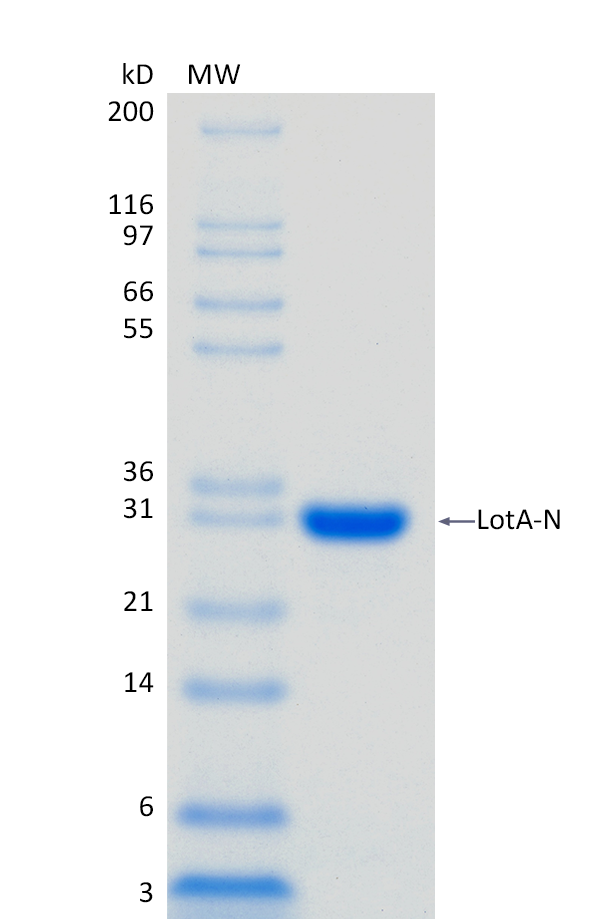 2 μg LotA-N run on 4-12% SDS-PAGE gel under reducing conditions
2 μg LotA-N run on 4-12% SDS-PAGE gel under reducing conditionsFor Research Use Only (RUO)
Luo, J., et al., (2022) J Biol Chem 298:102414. PMID 36007613
Takekawa, N., et al., (2022) J Bacteriol 204:e00376-21. PMID 34633867
Warren, G. D., et al., (2023) Mol Cell 83:105-120.e5. PMID 36538933
Zhang, Z., and C. Das. (2023) Trends Microbiol 31:423-425. PMID 36890008